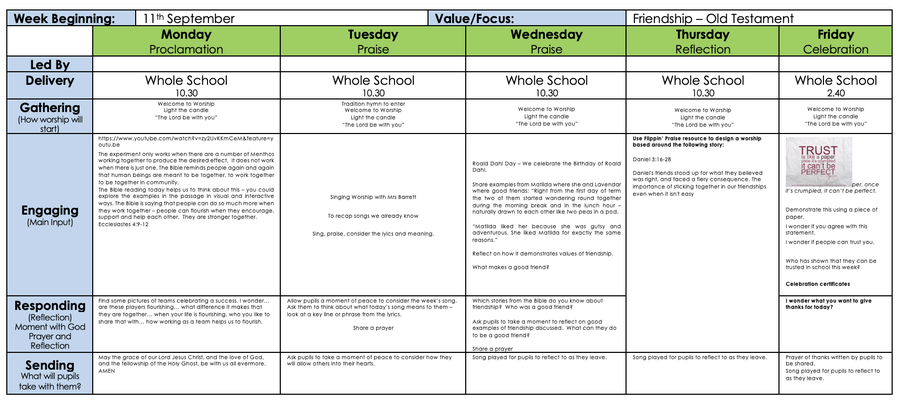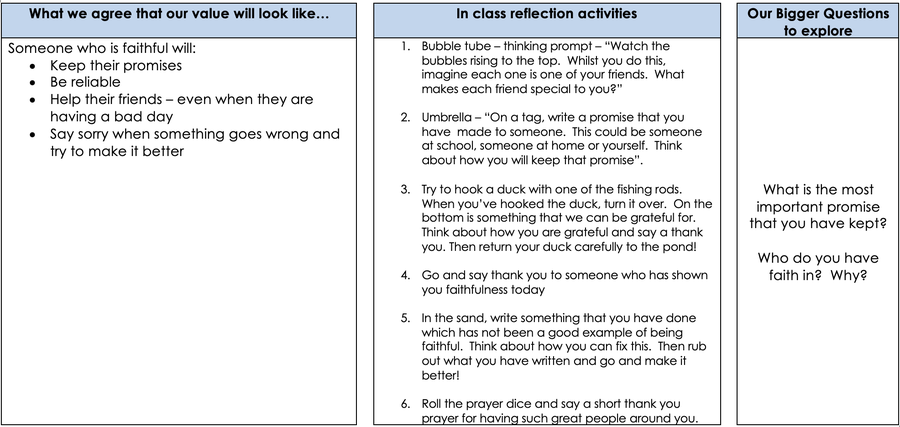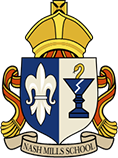Collective Worship
How is collective worship enabling pupils and adults to flourish spiritually?
Collective Worship is the heartbeat of our school, providing an opportunity for pupils to consider, explore and reflect aspects of our school's vision and values together through our Ubuntu focus. We appreciate that our children all come from different backgrounds and that all will feel able to engage in different ways and therefore we use the Church of England's 'fire' analogy; the children will all come around the fire but may choose how closely they sit. An example of how this works is when we say a prayer; pupils are able to join in if they wish and to say 'amen' at the end, or they can take the time for a moment of quiet reflection.
Worship is planning along the school's current ubuntu theme. During the planning stage, Mr Maher meets with the Reflections Council and Mother Alice to discuss how each theme can have a narrative that runs through the half term. For example where thinking about friendship, we looked at stories from the Old Testament (good and bad) and then moved to look at how they were continued into the Gospel before finishing the term by relating our reflection back to the parable of The Good Samaritan. This helps pupils to add context to worship and think about what they can take from it.
Planning is completed each half term, following the liturgical calendar, with different adults within school and our Reflections Ambassadors leading on different aspects. An example of a planning sheet can be seen below:

Each worship follows four distinct sections:
- The gather, where pupils come together and find out a little about today's theme. This may involve moments of silent reflection, listening to music or considering a 'Big Question'.
- The engage, where pupils will explore a new idea or revisit an existing one. This could be by listening to and discussing a Bible verse or watching a video or story.
- The response, where pupils have time to reflect on what they have learnt and consider how it might affect them. This could also include more quiet reflection or prayer.
- The sending, where pupils conclude worship and think about what they are going to do as a result.
Within worship, we use the Window, Mirror, Door analogy to support the different stages of reflection:
| Window Moments |
Opportunities for us to take a closer look at something and find out something new. This could be through accessing a new story or song, or listening to a new perspective or idea. |
|---|---|
| Mirror Moments | Opportunities for us to take a closer look at something and find out something new. This could be through accessing a new story or song, or listening to a new perspective or idea. |
| Door Moments | Opportunities for us to think about how we can use the new learning as we leave worship. What will we be able to do differently to have a positive impact on those around us?At times, visitors also come to help us run worship. Mother Alice comes to see us regularly, running different worship session both at school and at St Mary's Church. We also see Andrew Masters, a local methodist and have been visited by a Baptist minister also. This helps the children to have a good understanding of different Christian denominations. |
Each class has an area set up for worship, which follows seasonal and liturgical tradition. The Reflections Council design and provide activities for these spaces in class, which are planned into our termly programme. An example of this can be seen below:

